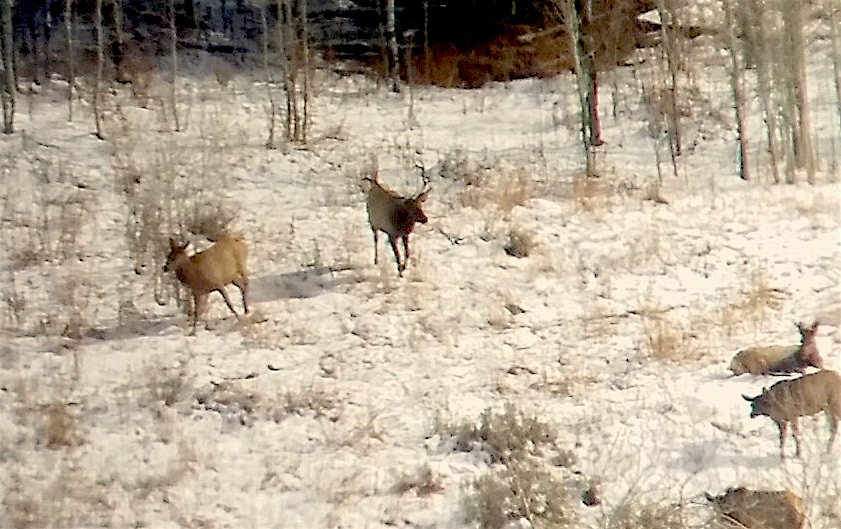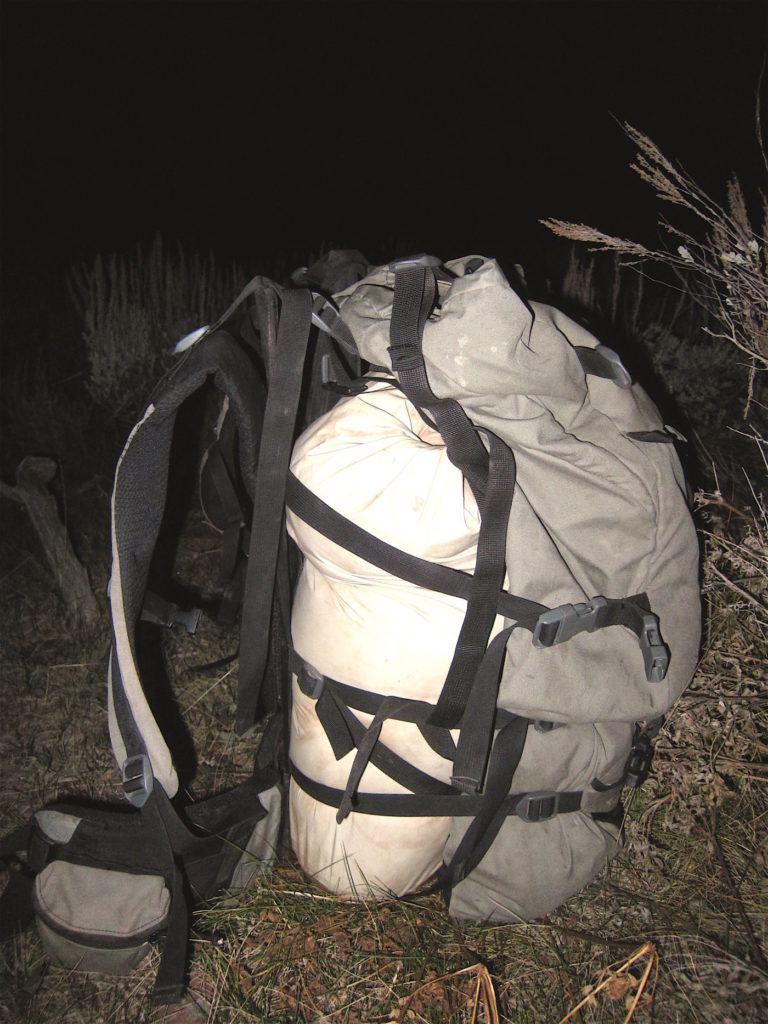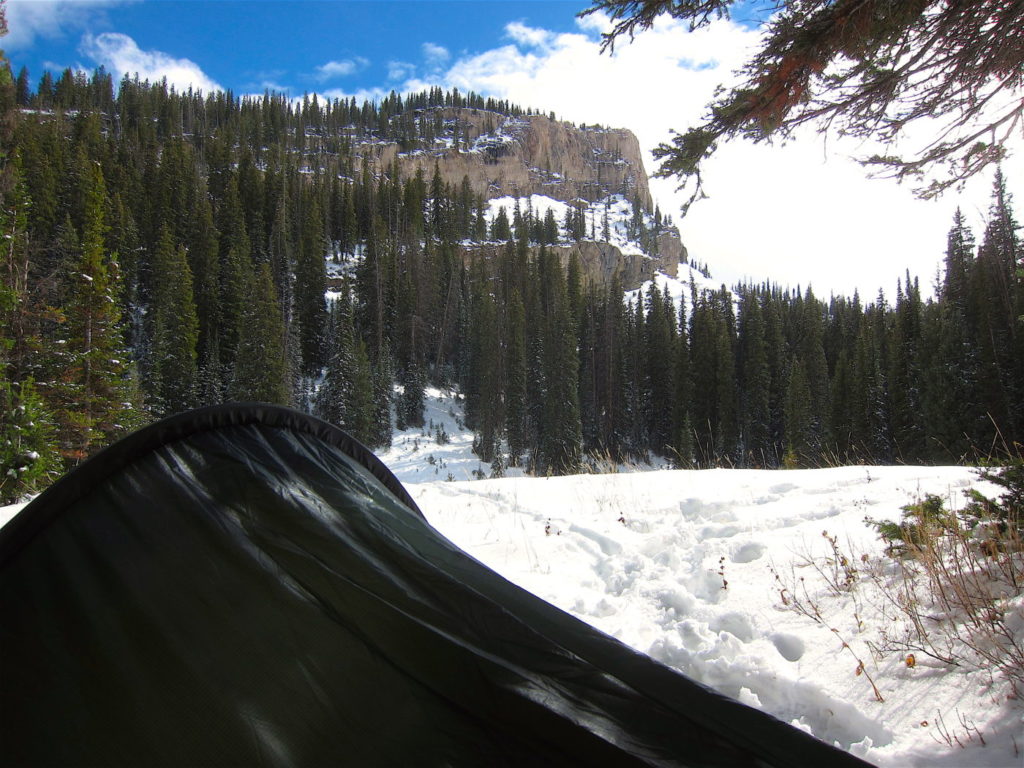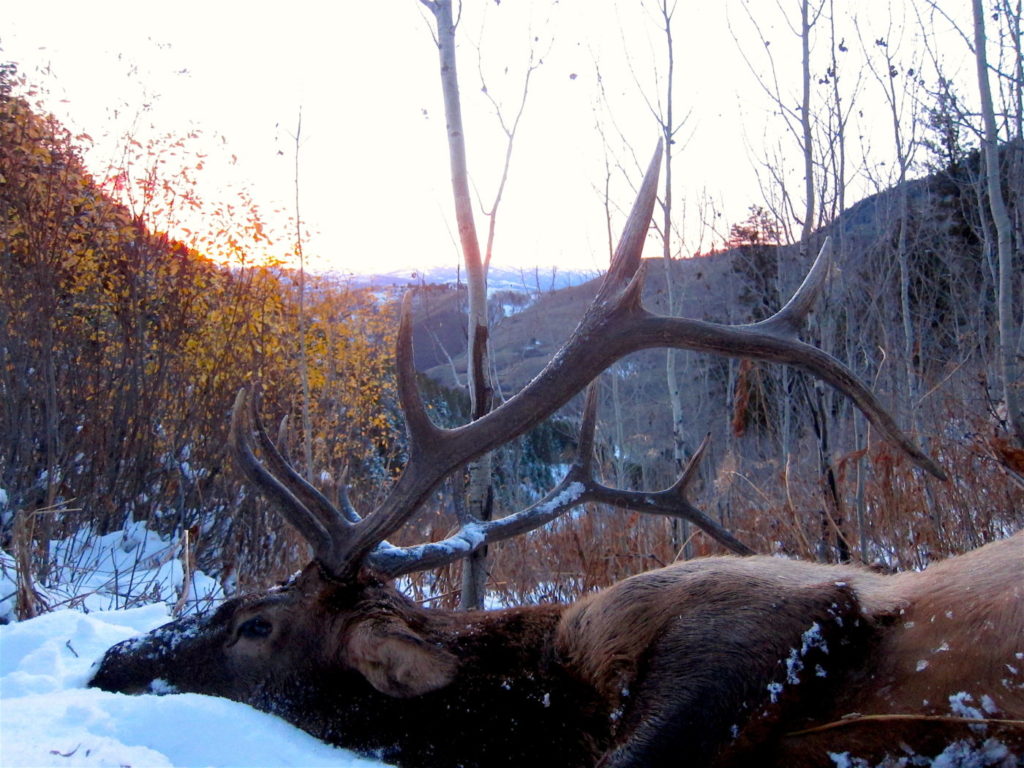I think one of the greatest lessons that rambling in wild places can teach is comfort with the unknown. You could call it flexibility, but that seems to shortchange the ever-present possibility of failure; whether that means failing to being safe, not accomplishing a goal, or simply giving up. As any adventure-lover can attest, the ability to adapt plans to changing conditions is a priceless asset.
With a decade of backpack hunts behind me, the summer of 2016 felt like I was starting to reach a rewarding place where knowledge of animal habits, backcountry skill, and physical ability intersect. It can’t last forever; I was about to get a reminder of that fact and a test of how adaptable I could be.

Early on August 13th, I took off with two friends on a day hike in Grand Teton National Park in Wyoming. The plan called for a half-day hike for me, while they would continue on and make a long loop to the north. Five minutes out of the trailhead I felt a burning sensation in my left forefoot. I was able to keep up a decent pace so I kept on going, up a couple thousand feet and several miles. By the time I turned around, I had a hard time putting weight on it. I figured it was a pulled muscle, strained ligament, or similar. The rhythmic dance of jogging downhill felt better than walking so I made quick time to the car.
A week later it was still hurting, so with fall just around the corner I made a trip in for an x-ray. The doc’s diagnosis was not what I’d hoped: Acute fracture of the third metatarsal, six weeks of non-weight bearing and an air cast, then re-evaluate. I tried to balance the feelings of disappointment with the knowledge that I had a lot to be thankful for. Unlike a lot of people around the world, I didn’t have reason to worry about feeding my family without being able to get around.
Fast forward three-and-a-half weeks. Things felt like they were healing, and while there was still swelling, I was able to move in a walking boot without crutches. I was supposed to take at least two more weeks before putting weight on it, but walking without crutches felt so good. I was happy with my progress but couldn’t quite justify the risk of going into the backcountry. I gave up on my planned high-country mule deer hunt and set my sights on backpacking for Rocky Mountain elk.
At week five I took a measured risk and laced up a pair of mostly-worn-out ice climbing boots I’d scored online for $10. They were my backups, but a little bigger than my standard pair and my foot was still too swollen to do otherwise. Some short walks around the house went well and I decided to go for it. I packed for a high-mileage solo backpack hunt, coming off of five weeks being planted on the couch.
The hike in was painful but uneventful. My foot felt protected in the heavy ice boots, though I paid for it in horrible blisters. The result was what I came for: remote places, minimally pressured elk, and adventure. After a few days of glassing small bulls and chasing a good one I never caught up to, I decided to fill an extra cow tag as I started to descend. This would be a tougher test on the foot; if successful, I knew there would be at least one big load before coming back with a friend to haul the rest of meat.
I’d watched a small bull work a herd of cows across a distant avalanche chute on the prior two evenings. I packed camp, dropped elevation, and set up in a cross-canyon location under calm conditions. They filtered out roughly as planned and I was successful on a nice cow just before dusk.
By the time I made the long recovery and converted elk to heavy meat bags, it was the early hours of the morning. Laying around for so long prior to the hunt had made me soft, and I was physically worn down. But knowing I could catch a few hours of sleep in my own bed if I went for it, I loaded up as much as I felt I could handle and took off down the trail. The trailhead came just after dawn. I napped after dropping off the meat in a cooler at home, and made the return trip with a friend for the rest of the payload. A quick post-trip estimate on Google Earth told me I’d hiked around 30 miles in that 36-hour period, about half of which was off-trail. I stepped on the scale and I was down nine pounds of water, chub, and heel skin.
A checkup the next week to tell me I could try walking without crutches yielded good news. After all of the previous weekend’s effort, the bone had held up and was still healing. I may have missed alpine mule deer hunting, but I was going to make the most of my remaining elk tag.
The next weekend found me on another backpack trip to an area I’ve consistently found bulls. Cows, bighorn sheep, and some respectable mule deer (the season was over) showed up, but nothing I was after. I pushed hard and covered a lot of beautiful miles. It was getting late enough to be cold up high. Clear days, fresh snow, and a dozen or so square miles to myself was truly awesome.
As October came to a close, I had one more shot to backpack in for a bull. My foot was feeling good, and I exchanged heavy footwear for my preferred trekking shoes. I was already satisfied with the season that I thought might not happen, but I owed myself one more hard push to see what turned up.
I hiked in to a new area under sunny skies, with snow clinging to the shadows but bare south-facing slopes. A few miles in I dropped my pack behind a tree to glass from a vantage point, as much because it was a good place for a snack as it was strategic. Within 30 seconds I spotted a cow. Then another, and another, and pretty soon I’d seen several dozen. A couple of minutes later a bull sauntered out—a good 6×6 public land animal. He was milling in the center of the herd and a stalk would be risky, but there was no long-range shot opportunity and time was on my side.
They bedded as I dropped my unneeded gear and started down to cross the canyon. A couple of careful, slow hours later I was among them. Several cows fed casually at 75 yards. I had the wind in my favor and waited until darkness crept up without any sign of the bull. With no time to spare I pressed into the cows and set up over my pack to watch the herd file out. Still no bull. I hurried toward a small aspen pocket: the only place in the area that I couldn’t see. He jumped as I arrived, and disappeared into north-facing cover, melding with the rest of the herd. I dropped my pack and ran, something I normally wouldn’t bother doing, hoping to catch them contouring around a steep ravine.
My effort was rewarded. I slid against a log and waited for cows to clear him at 200 yards in dog-hair timber. I got the shot window I needed and it was done. The unknown was done. Another heavy, all-night hike with my thoughts felt like gravy compared the one just a few weeks before.
When I look back at this hunt, it was certainly one of my most rewarding wilderness experiences. Not for the quality of animal or company, though I always enjoy the time spent with good friends who come along to pack meat. It’s because the challenge was different. It was because I learned I could keep at it hard enough to make up for being physically and mentally rattled.
In everyday situations I am able to handle uncertainty more comfortably than many of those around me. It’s not because I’m a better person, or have a special talent. I think it’s because I don’t have to convert an unknown into structure in order to find resolution. Years of mountain adventure have taught me that the ability to change plans, adapt to new challenges, and be content when things don’t go as planned, is indispensable. Whether I hunt another day in my life or not, that’s a hard-earned skill I can always carry.







